
Joint virtual monthly exhibition. October– “The School”

Preili Museum of History and Applied Arts
The first folk-school was opened in Preili in 1865, and in 1888 – the Orthodox parish school. From 1865, the press ban on Latin writing was introduced in Latgale, which meant that only Russian could be used in schools and state institutions. The press ban continued until 1904. In the first half of 20th century there were 3 six-grade primary schools in Preili: Preili Parish Primary School, Preili Russian Primary School and Preili Jewish Primary School, while Preili Agricultural School was located in the Preili Palace. The decision to open a secondary school in Preili was taken in 1940, but the secondary school started to fully operate only after the Second World War in 1944. Nowadays there are Preili State Gymnasium, Preili 2nd secondary school, Preili 1st primary school and Preili department of Riga Technical School of Tourism and Creative Industry.
1. Alphabet book "Латышскiй букварь" or "Латвѣшу Бôкверіс" in Cyrillic, published in Vilnius in 1864. Author – Nikolai Sokolov. It reflects the beginning of the press ban and the Russification policy of the Russian Empire in the Northwest region. The alphabet book belonged to the local farmer Izidors Lauskis (1861–1924). Displayed in the exhibition of the Preili Museum of History and Applied Arts.
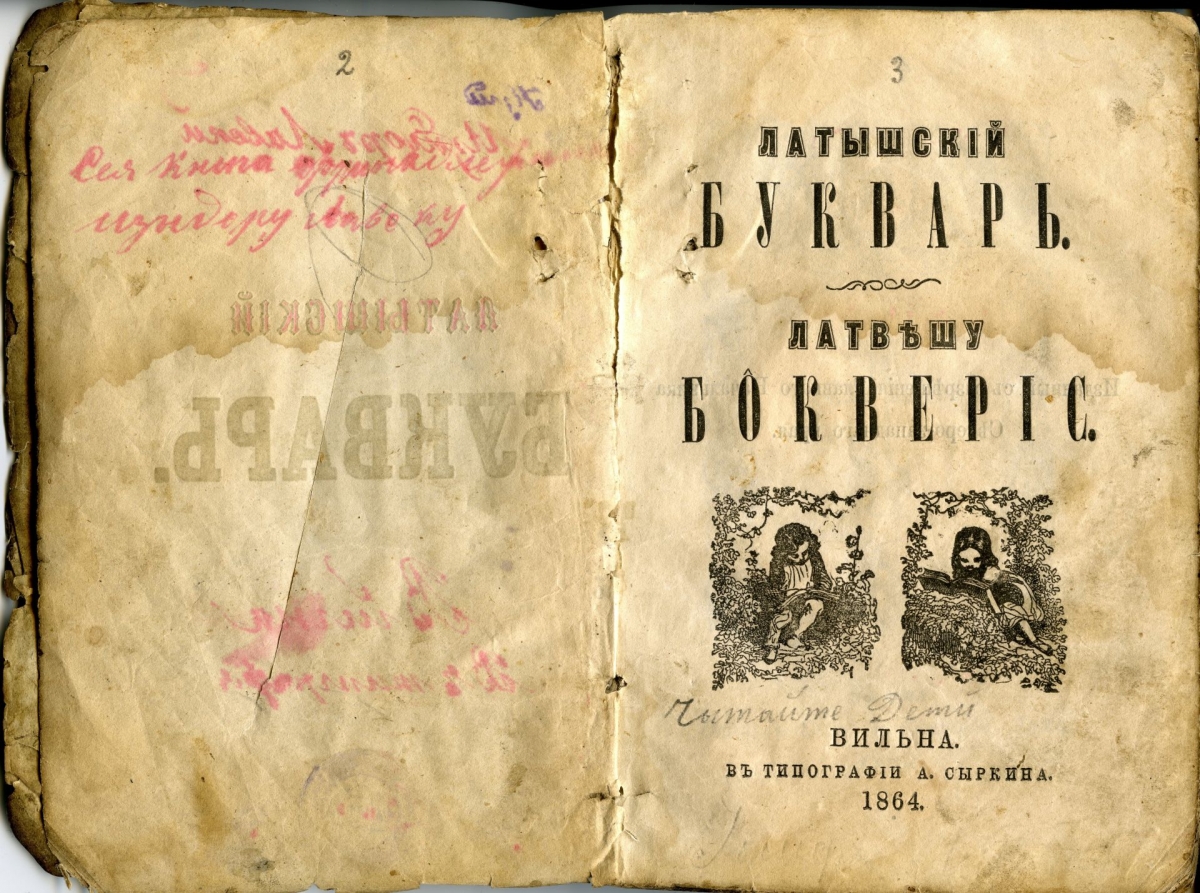
2. Graduation of the Preili Parish Six-grade Primary School. Photo taken near the school building, on June 8, 1924. In 1904, a two-storey stone building for a folk-school was built on Daugavpils Street in Preili. After the Latvian War of Independence, a six-grade primary school for Preili Parish operated in this building. In the second half of the 20th century a new building was built next to the old one and currently the Preili 1st Primary School is located there. There are also several expositions of the Preili Museum of History and Applied Arts in the premises of the historical building of the school.

3. A gramophone rewarded to the future film director Jānis Streičs at Gailisi Primary School in 1951 for leading a pioneers squad. Displayed in the exhibition of the Preili Museum of History and Applied Arts. During the Soviet occupation from 1944 to 1991, education was also included in the Soviet ideology system. Pupils were involved in children's and youth’s organizations – pioneers and komsomol. The pioneer organization brought together pupils aged 10-15.
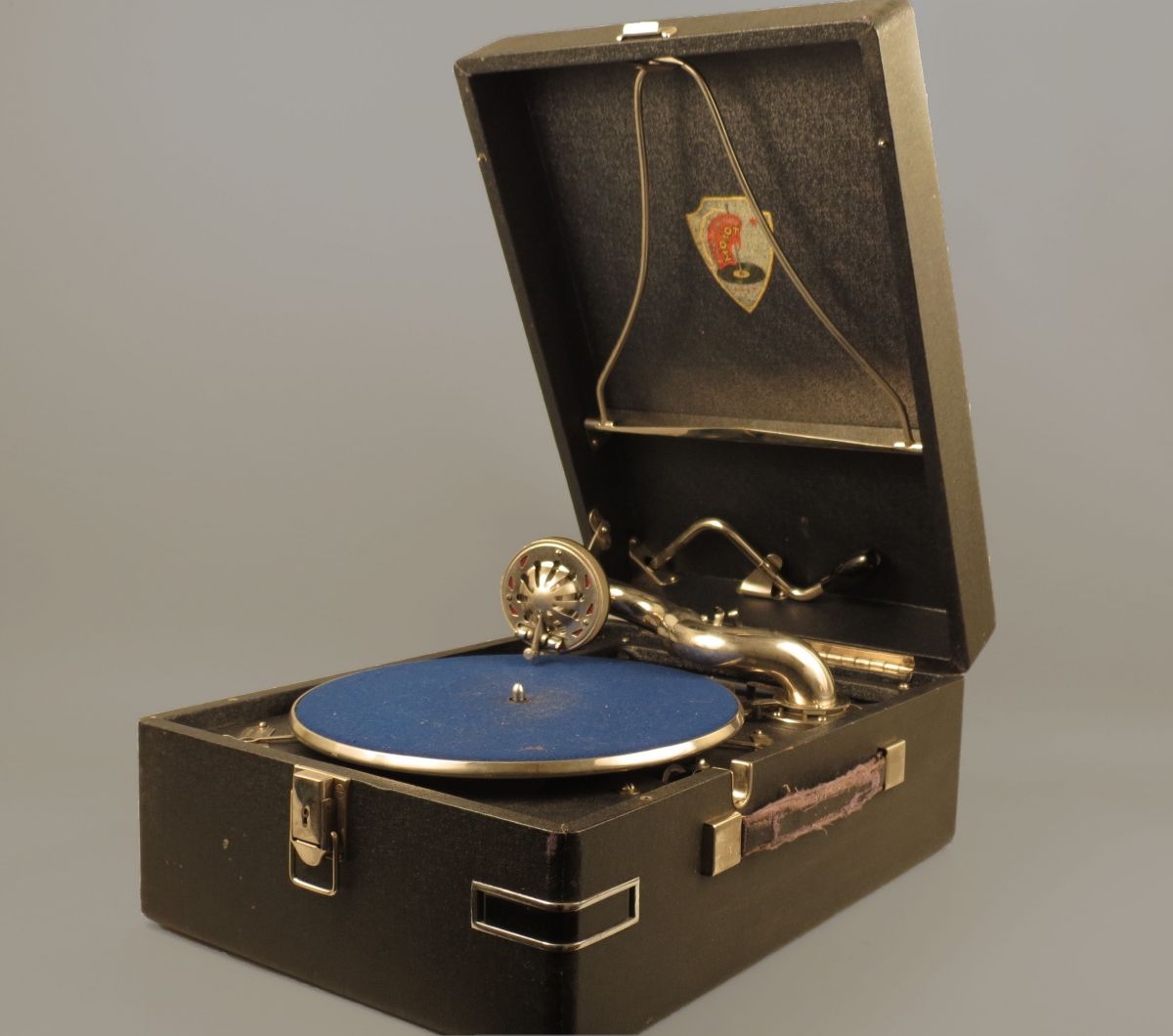
Grodno State Museum of the History of Religion
The formation of education in Hrodna and its development in the early stage (12th–16th centuries) was influenced by the Christian worldview: monasteries served as a place for rewriting books, children received basic knowledge there. Since the 17th century, the Jesuit Order, founded in 1534, began to play a dominant role in the implementation of the educational function. Its members set up collegiums across the country and taught students rhetoric, Latin, astronomy, and other sciences. In 1775, the French naturalist, surgeon and anatomist Jean Emmanuel Gilibert opened the first medical school on the Belarusian lands in Hrodna. In the 19th century, two gymnasiums (a men’s and a women’s gymnasium) were opened in the city. Students had the opportunity to receive a classical humanitarian education there. In the interwar period (1918–1939), Hrodna was part of the Polish Republic; therefore the influence of Polish culture is noticeable in the education of that time. After the Second World War, the pedagogical community of the city actively participated in the process of educational traditions renewal in the region. Today, the city has various types of institutions: schools, gymnasiums, lyceums, colleges, as well as 3 large state universities - Yanka Kupala State University of Hrodna, Hrodna State Medical University and Hrodna State Agrarian University.
1. Icon "Anna Teaches Mary to Read"
The icon dates from the first half of the 19th century. Saint Anna, the mother of the Virgin Mary, the patroness of the marriage and pregnant women is depicted on it. She sits with an open book on her lap and teaches her daughter to read. There are pictures in which Saint Anne teaches Mary to embroider. The icon reflects the close connection between education and the Christian worldview at the time of the creation of the work.
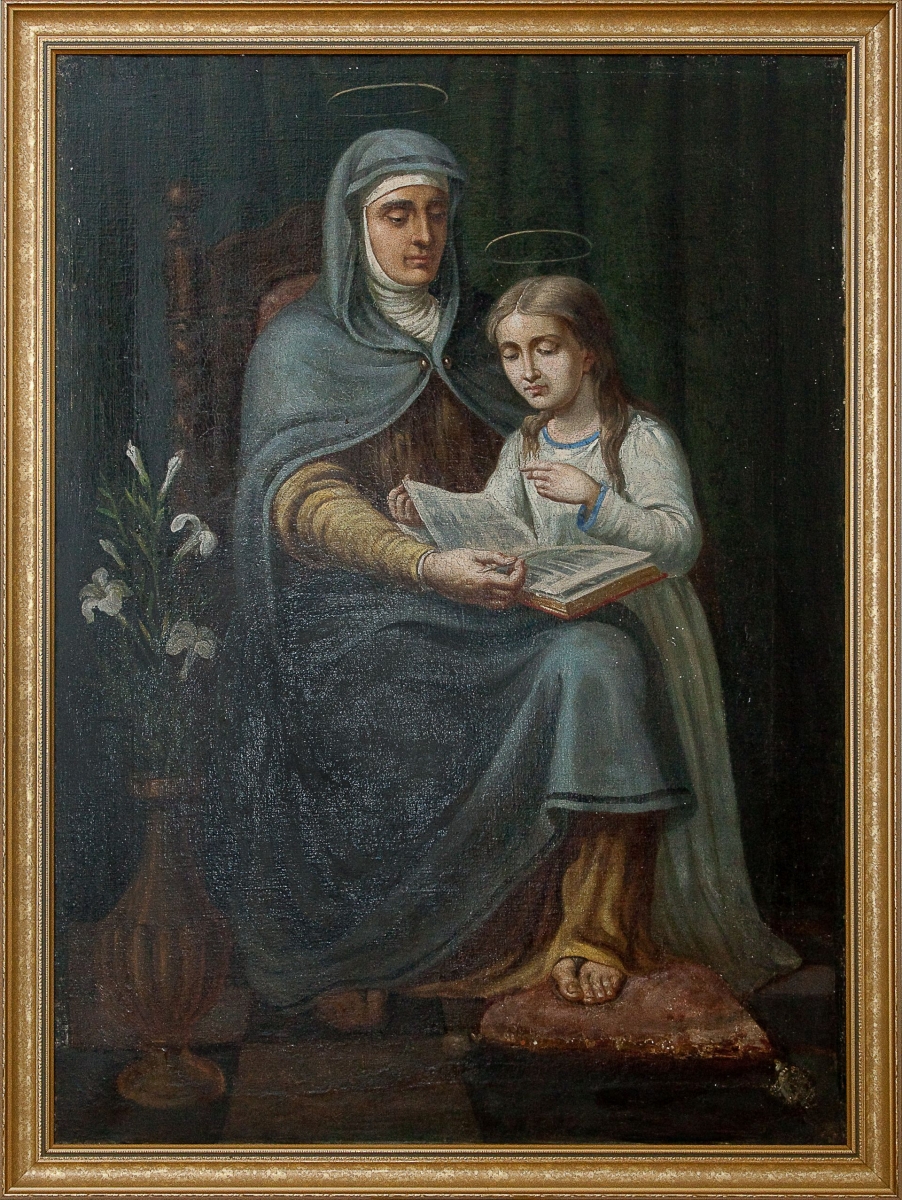
2. Photo of the women’s gymnasium in Hrodna
In the second half of the 19th century, the women's Mariinsky gymnasium was opened in Hrodna. In 1892, a special building in a "brick" style was erected for it according to the project of the engineer Nebalsin (present-day street Eliza Ozheshko, 22). It has survived to this day. The main building of the Yanka Kupala State University of Hrodna is located here. The photo shows what the building looked like in 1904-1909.

3. Document "Swiadectwo szkolne" (School certificate)
The document was issued in 1936 to Mikalai Zorko from village Bondary of the Hrodna district as confirmation of the completion of the fourth grade of school. It contains the marks received by the student, as well as the mark of the voluntary collection for the construction of secondary schools. Similar certificates were issued to schoolchildren every year.
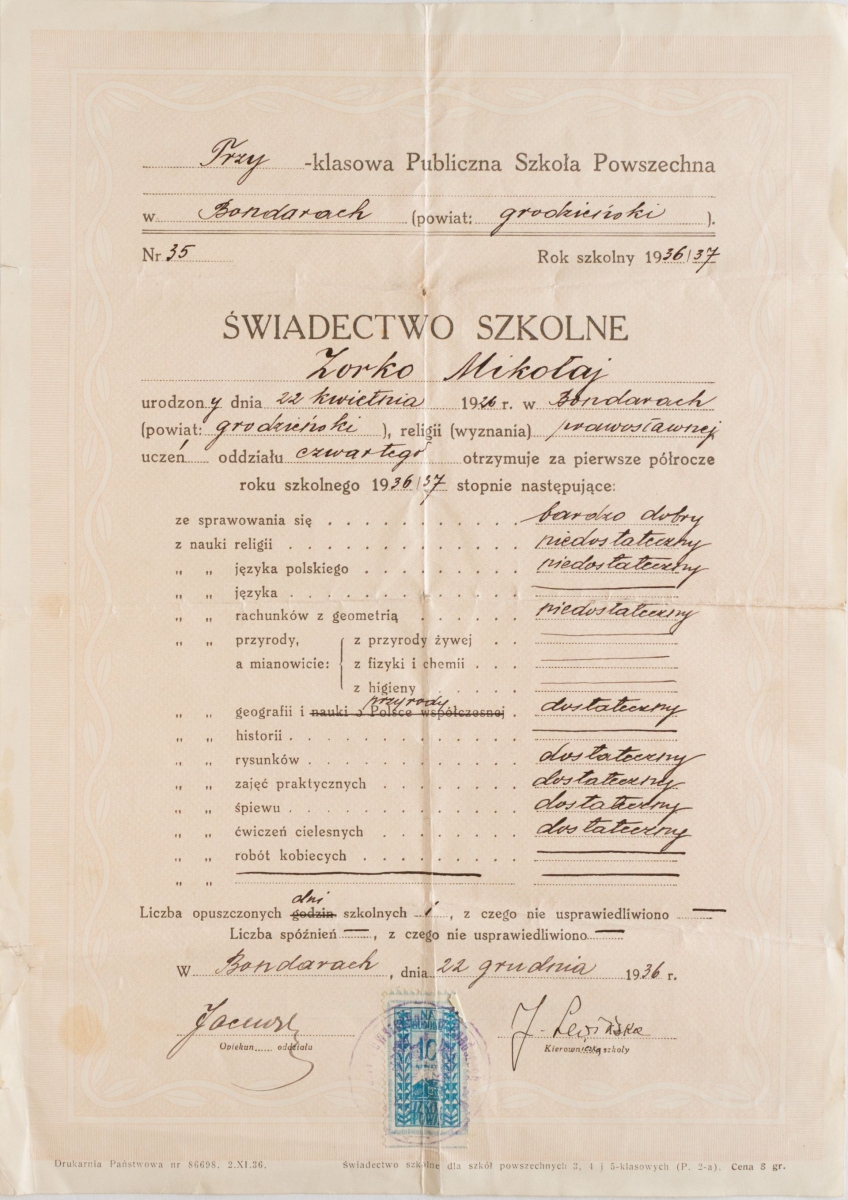
Panevėžys Local Lore Museum
The monks Piarists established the first school – the College, corresponding to the current secondary school, in Panevėžys in 1727. The Piarists had their goal to educate youth in Christian traditions at schools. After the 1831 uprising Piarists monasteries and schools were closed by the decision of the Tsarist Russian government. In 1834–1858 the School of Nobility operated in Troškūnai, from 1840 it was moved to Panevėžys. The School of Nobility was reorganized into the Gymnasium, and in 1865 it was closed by Tsarist government for the students and teachers‘ participation in 1863 uprising. In 1872 the Teachers' Seminary was established in the former Gymnasium building. In 1882 the Real School started working and a couple of years later it was moved to a newly built building. On the 1st October, 1915 the Gymnasium was opened and it was the first Lithuanian secondary school in Lithuania. After the First World War, the Gymnasium was moved to the Real School building.
1. Panevėžys State Gymnasium. Around 1930. The palace was built in 1884 for the Real School. In the years of the Republic of Lithuania (1918–1940) many prominent Lithuanian teachers worked in the Gymnasium. Various self-education and art organizations operated in the Gymnasium. On 23–25 August, 1924 the first Panevėžys city song festival took place in the yard of the Gymnasium. In 1932 the girls' classes were moved to the new building of the Girls' Gymnasium.
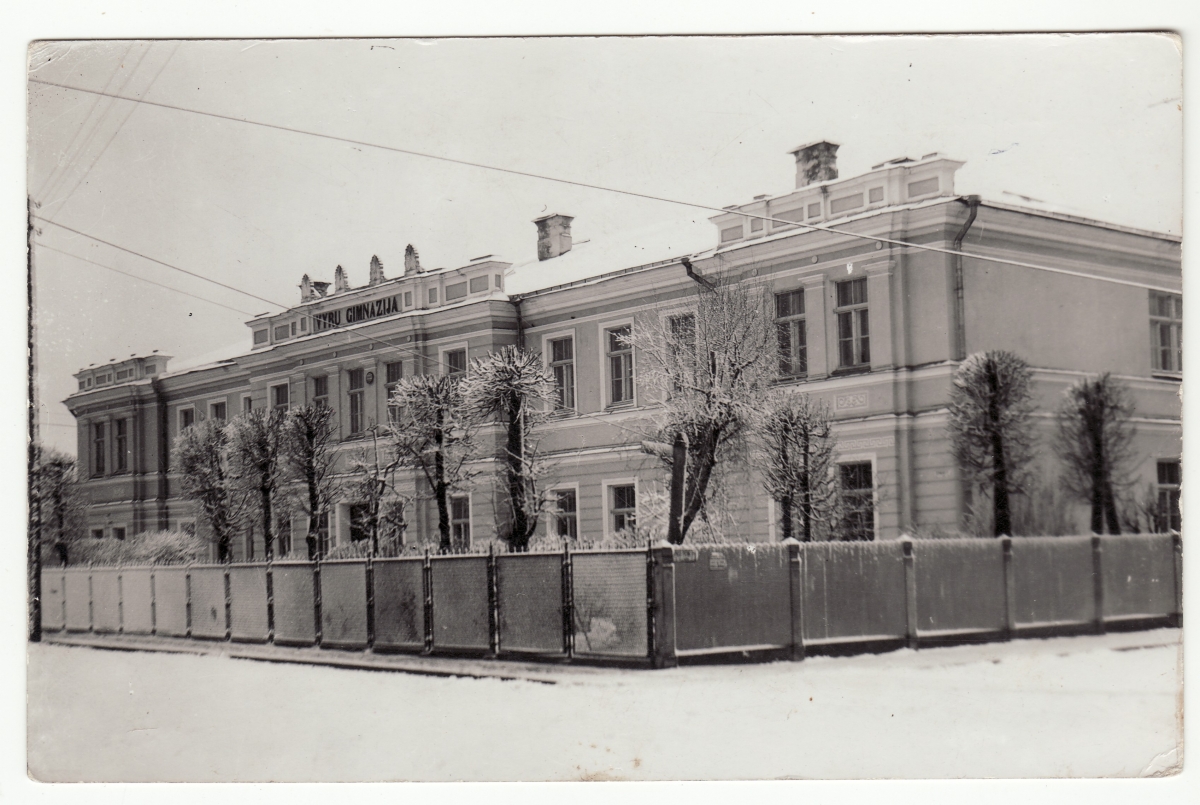
2. Girls' school uniform. The 1980‘s. Photographer Tomas Stasevičius. The project of the schoolgirls‘ uniform was approved by the Panevėžys State Gymnasium Teachers' Board in February of 1921. Teachers of Panevėžys Gymnasium Gabrielė Petkevičaitė-Bitė, Juozas Zikaras and Elena Jasinskaitė participated in the work of the commission for preparing schollgirls‘ uniforms. In 1922–1924 school years boys' uniform was introduced and for graduates also were presented uniform caps with the Gymnasium badge created by J. Zikaras. School uniforms were worn in many Lithuanian schools until 1990.

3. Panevėžys Juozas Balčikonis Gymnasium. 2020. Photographer Gediminas Kartanas. In 1949 after changing the structure of schools, Panevėžys 1st Gymnasium was reorganized into the eleven-year secondary school No 1. In 1970 the school was awarded the name of Juozas Balčikonis – he was a former student and director of the Gymnasium, a linguist and an academic. In 1992 the School got the Gymnasium status. Currently, it is one of the best rated gymnasiums in Lithuania.

This publication was produced with the financial support of the European Union. Its contents are the sole responsibility of Preili County council, Panevėžys Local Lore Museum and Grodno State Museum of the History of Religion and do not necessarily reflect the views of the European Union.
About the project ENI-LLB-1-244 “Promotion of historical and culture cross border through museums innovations”:
The project aims to build a cross border cooperation platform creating preconditions for ensuring the increasing interest of tourists and visitors about the cultural and historical heritage in the border area of Latvia, Lithuania and Belarus.
This project is funded by the European Union
Project budget: 367 864.64 EUR, EU funding 331 078.17 EUR
Project implementation period: 1st of June 2020 – 31st of May 2022
European Neighbourhood Instrument Cross-border Cooperation Programme Latvia-LithuaniaBelarus 2014–2020
https://eeas.europa.eu/delegations/
Information prepared by:
Preili Museum of History and Applied Arts: https://preili.lv/nozares/kultura/muzeji/preilu-vestures-un-lietiskas-makslas-muzejs/
Grodno State Museum of the History of Religion: http://muzej.by/
Panevėžys Local Lore Museum: http://www.paneveziomuziejus.lt/
